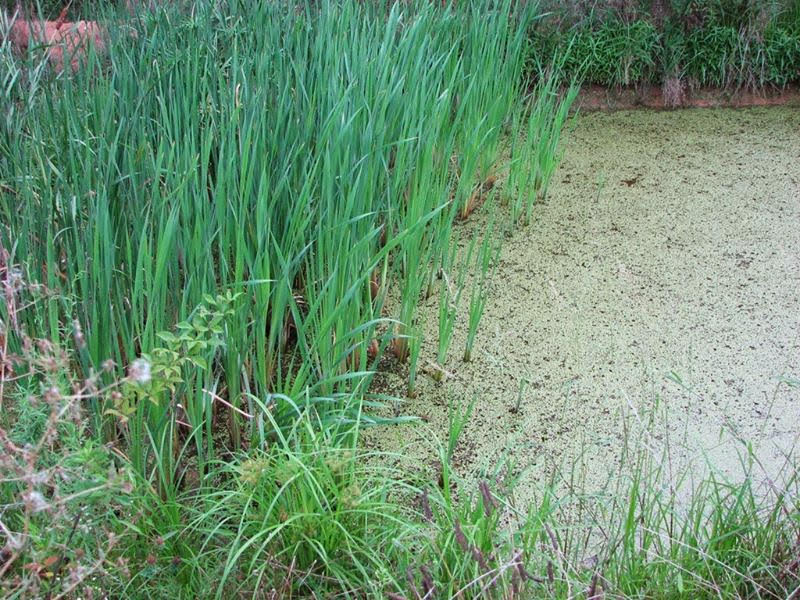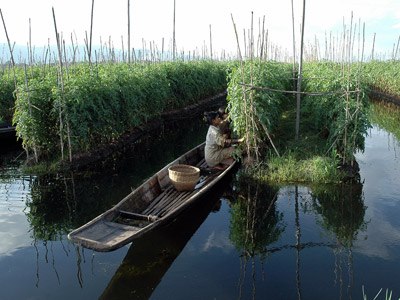permaculture@lists.ibiblio.org
Subject: permaculture
List archive
- From: Lawrence London <lfljvenaura@gmail.com>
- To: permaculture <permaculture@lists.ibiblio.org>
- Subject: Re: [permaculture] IPC Values ?
- Date: Wed, 1 Jul 2015 12:00:44 -0400
On Wed, Jul 1, 2015 at 8:34 AM, Koreen Brennan <koreenbrennan@gmail.com>
wrote:
> They did plant some wetland plants though, and got some
> points for that. They put chlorine in the pond water to keep the algae out
> though, lol.
>
A catchment pond can easily remediate excess nutrients. They are working
backward putting chlorine in the water.
Algae are Nature's response to unnatural levels of nutrients in water, i.e.
nitrogen. The way it is done is to plant the water, the soil in the pond
and the soil around the pond, the shore/beach, embankments and adjoining
watershed. Required plantings include duckweed, water lillies, cattails,
papyrus, limited aquatic plants (do not remember names but some are used in
aquariums) and in warm climates water hyacinth and other floating plants.
These plant communities become self sustaining and to a degree self
regulating. They provide habitat, breeding grounds and food for many
marine, aquatic and land based creatures. Mosquito control is always a
benefit from a balanced pond ecosystem, birds, dragonflies and bats
accomplish this. Lose the chlorine and bring in the duckweed and cattails,
and algae! In a balanced diverse aquatic system algae does not last long as
it becomes food for other creatures and eventually plants; duckweed
outcompetes it for space and light. This scenario happens even during
loading of fresh nutrients, sometimes in large quantities, from adjoining
watersheds, ditches draining fields, pastures with livestock manure. Living
floating islands and chinampas can add significantly to remediation of
nutrient rich water flowing into the pond.
Volvox, one of the seven wonders of the micro world
http://www.microscopy-uk.org.uk/mag/indexmag.html?http://www.microscopy-uk.org.uk/mag/artdec03/volvox.html
*Volvox* is a Chlorophyte, or green alga. It exists as a grand spherical
colony. Each little alga within the colony bears two flagella, whip-like
hairs. The individual alga are connected to each other by thin strands of
cytoplasm that enable the whole colony to swim in a coordinated fashion.
The individual alga also have small red eye spots.
The colonies even have what we could call a front and rear end. Or, since
Volvox resembles a little planet, a 'north and south pole'. In the northern
region the eyespots are more developed. This helps the colony to swim
towards the light. This differentiation of cells make *Volvox* quite
unique. It is a colony that comes really close to being a multi-celled
organism.
Watching groups of colonies under the light microscope is a breathtaking
sight. If you leave enough space under the cover slip (with the aid of
spots of Vaseline under the corners) the spheres will swim slowly towards
the light of the microscope, (use dark field illumination!).
*Volvox* can be found relatively easy. They need quite clean nutrient rich
water (Eutrophic) and it has to be warm so summer is the time of the year
for a good *Volvox* catch. The best thing to do is to use a plankton net
but if you are lucky you can also find them by squeezing pond scum. In a
jar of pond water they will swim towards the light so they are often easy
to find near the surface.
<> - LL
One of my ponds:
This is the aquarium aquatic plant I referred to above growing with
duckweed in a small pool I built
Same pool as above which was close up picture.
Cattails and duckweed in same pond with water lillies.
Water hyacinth in a lake in China
--
Lawrence F. London
lfljvenaura@gmail.com
https://sites.google.com/site/avantgeared/
-
Re: [permaculture] IPC Values ?,
Toby Hemenway, 07/01/2015
- <Possible follow-up(s)>
-
Re: [permaculture] IPC Values ?,
Steve Hart, 07/01/2015
-
Re: [permaculture] IPC Values ?,
Koreen Brennan, 07/01/2015
-
Re: [permaculture] IPC Values ?,
Lawrence London, 07/01/2015
- Re: [permaculture] IPC Values ?, Lawrence London, 07/01/2015
-
Re: [permaculture] IPC Values ?,
Koreen Brennan, 07/01/2015
-
Re: [permaculture] IPC Values ?,
Lawrence London, 07/04/2015
-
Re: [permaculture] IPC Values ?,
Lawrence London, 07/04/2015
- Re: [permaculture] IPC Values ?, Lawrence London, 07/04/2015
-
Re: [permaculture] IPC Values ?,
Koreen Brennan, 07/04/2015
- Re: [permaculture] IPC Values ?, Lawrence London, 07/04/2015
- Re: [permaculture] IPC Values ?, Koreen Brennan, 07/04/2015
- Re: [permaculture] IPC Values ?, Lawrence London, 07/05/2015
- Message not available
- Re: [permaculture] IPC Values ?, Lawrence London, 07/05/2015
-
Re: [permaculture] IPC Values ?,
Lawrence London, 07/04/2015
-
Re: [permaculture] IPC Values ?,
Lawrence London, 07/04/2015
-
Re: [permaculture] IPC Values ?,
Lawrence London, 07/01/2015
-
Re: [permaculture] IPC Values ?,
Koreen Brennan, 07/01/2015
Archive powered by MHonArc 2.6.24.






